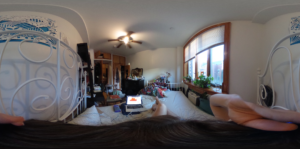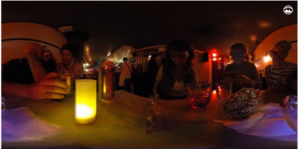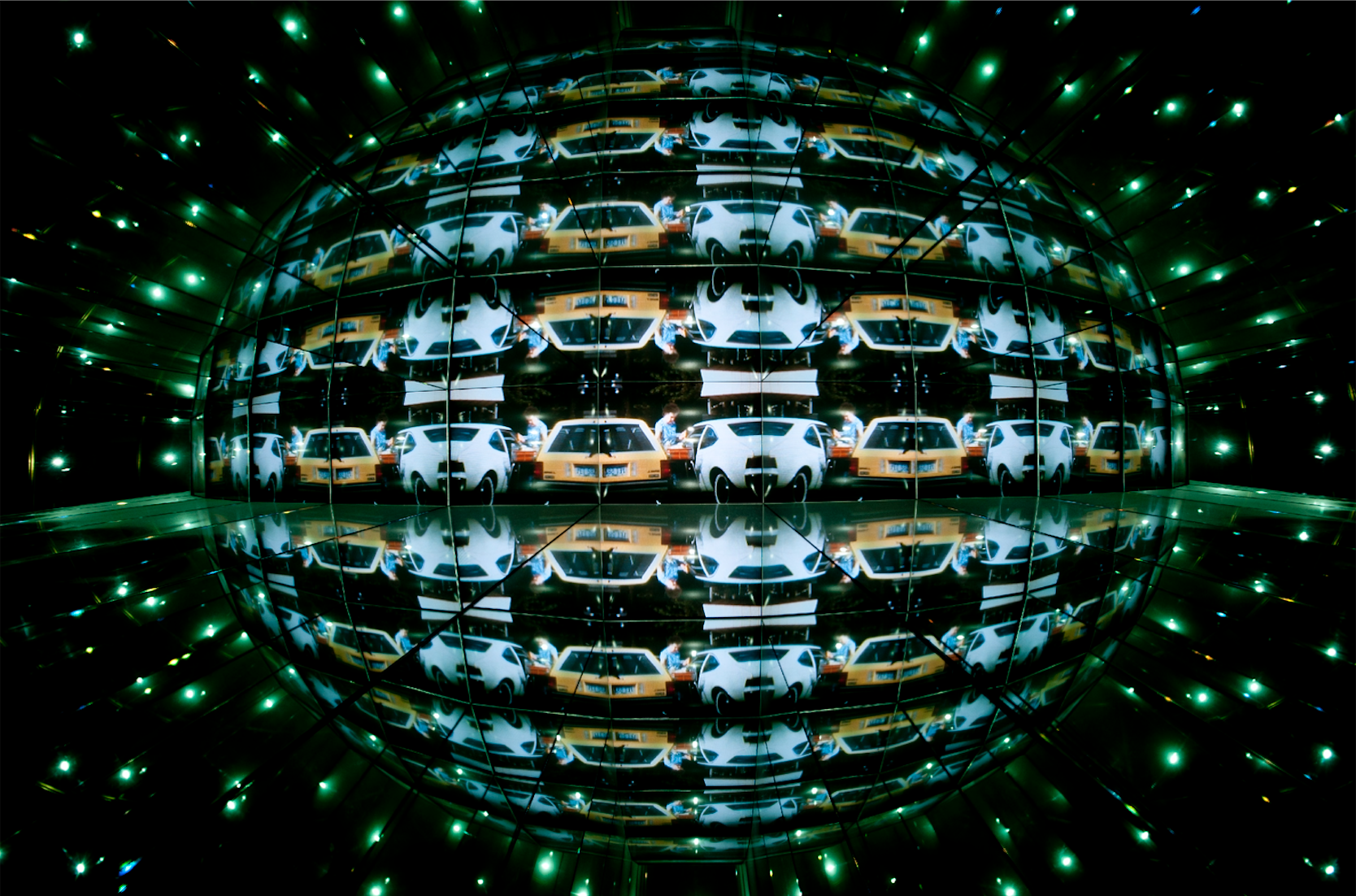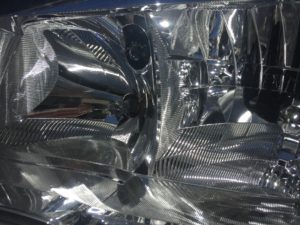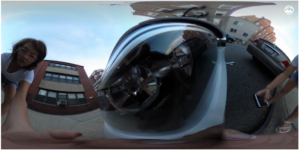DIY-VR: Reflection/Mundanity
I spent time this weekend playing around with the Ricoh Theta, understanding it as a photographic tool with both possibilities and limitations.
For one – if you don’t have a monopod, clamp or a surface to place the theta,you’re going to perpetually become part of the shot.
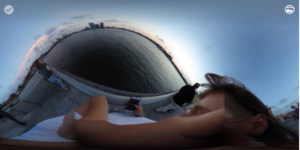 So I played with this relationship – placing the theta on top of my head, holding it next to my ear or out above me, letting it swing by my side.
So I played with this relationship – placing the theta on top of my head, holding it next to my ear or out above me, letting it swing by my side.
Viewing these photos, I keep finding it interesting that unlike regular photography, the Theta doesn’t replicate a photographer’s POV – literally, what the photographer sees the moment the picture is taken. In order to capture that sense of body in this sphere, the photographer needs to remove themselves from the scene so the viewer can step into the space.
——————————
To me, VR has this expectation that the content needs to be impactful in some way – visually, emotionally, physically. But I wondered if re-seeing spaces we’d previously been in or were familiar with would create the easiest sense of presence, since it’s already believable in its existence.
Playing with the Theta, I took a picture of my bedroom and then viewed that image in google cardboard. Suddenly I was transported…to exactly where I physically was.
But it was disorienting just because a few seconds had past, a few things were different. yet I could confidently navigate the space knowing that it’s real self was still around me. I gave it to my roommate and watched her as she looked at my room while in my room.
As I experimented with the Theta, I kept thinking about mundanity, the everyday and unremarkable. In some ways, that’s what the Theta strives for – it is the new selfie format and snapshot technology.
What does it mean to increasingly look at 360 photos/videos and have this become normalized? Are we going to constantly wanting to be having experiences that raise our pulse or can it be about the everyday? As someone in my Hacking Story Frameworks class mentioned, what excites him about VR/AR is not the mega-blockbuster entertainment possibilities but seeing his family and his home, and being able to share that experience with others. Theta allows us to take snapshots or a moment in time, it encourages us to use it like we would our smart phone cameras – immediately uploading to social media. If Theta can show an entire world, why pretend like we can stage it? Control it?
An experiment that I did to play with the idea of immersion was to play with mirrors to reflect imagery. Reflecting (no pun intended) on prior immersive experiences, I remembered this project by Theo Eshetu, Brave New World II, 1999.
It uses images from across the world refracted several times. Recently I’ve been listening to a book about multiple universes and the author credits the two mirrors in his bedroom as the inspiration for his curiosity. How many times have we marveled at the multiple versions of ourselves and our reality that we see when two mirrors come together at a certain angle? I was almost tempted to make a human-size kaleidoscope, like the one here:

I loved the worlds that the Theta App made when I used pictures of reflective surfaces.
But when I tried to recreate them using the app – of course the rest of the world got in the way. Rather than the typical use of mirrors in photography and film, to show us what would exist behind the viewer, we can simply turn around.
In some ways, this reflection and refraction is entirely possible with VR and 360.
Thinking back to including reflective surfaces, I played with using multiple mirrors, trying to angle them in such a way to create a series of infinite selfies and a subject caught between mirrors.
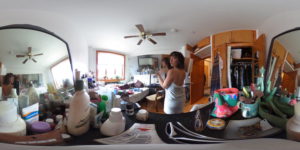 What I liked about this is that in someways it ends up giving a form to the viewer – like in the Arnolfini Wedding Portrait by Jan Van Eyck, we can see the creator – the Theta caught in the mirror. How does the person viewing react when they do not see their reflection? Do they see themselves as the Theta? As a ghost?
What I liked about this is that in someways it ends up giving a form to the viewer – like in the Arnolfini Wedding Portrait by Jan Van Eyck, we can see the creator – the Theta caught in the mirror. How does the person viewing react when they do not see their reflection? Do they see themselves as the Theta? As a ghost?
——
Thinking about presence as the creator, it’s a new experience to imagine the presence of the person who will be looking from all angles in a way I can only somewhat control. How the angles are going to effect their experience because they won’t have the separation of someone viewing photographs in a gallery, web page, book. They will be “inside” the photograph and expect to see things from “their” perspective – even though that perspective was created and constrained by someone else.
Slide show here: https://goo.gl/photos/MJeksU87moVxiEvd8
